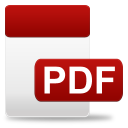Knowledge: The Library Revolution
E-Book PDF: Open in New Window | Download (0.0KB)
Subscribe or Follow Apple Podcasts | Spotify | Amazon Music | Pandora | iHeartRadio | Email | More

Libraries, unfortunately, are all too often viewed as antiquated as your grandmother’s chintz curtains.
The public perception of the total value of a library is often veiled by their large budgets and seemingly little return. The reality is though, libraries have dealt with cuts for years now with budgets decreasing even as prices on databases, materials, and technology increase. Even within the library world, a common topic of conversation and conference theme is its own relevancy. Many graduate Library Science programs, like Kent State, ask applicants to write an essay on the relevancy of libraries. Such a requirement is already setting up a professional perception of its own irrelevancy.
 (Martin Prosperity Institute, Page 1, 2013)
(Martin Prosperity Institute, Page 1, 2013)
But, libraries are in fact useful and economically advantageous. The Free Library of Philadelphia pinpointed four major economic areas that libraries contribute to: literacy, workforce development, business development, and increased home and neighborhood values (Fels Research & Consulting, Diamond, Gillen, Litman, & Thornburgh, 2010). The Toronto Public Library estimates it has created over $1 billion in total economic impact (Martin Prosperity Institute, 2013). The bottom line is they provide a low cost education and cultural platform for society (Z. Zhou, personal communication, November 10, 2015).
What is true though, libraries are at a crossroads and in need of a revolution—“one that remakes the institution’s technology, goals and training (Lozada, 2015).” Knowledge management can be a part of it, if not a catalyst. It is an approach to the management and effective use of intellectual capital.
The key to knowledge management is approaching it with the creativity of design and the pragmatics of a business. There is not a one size fits all approach nor is there only one approach that leads to successful knowledge management (Becerra-Fernandez & Sabherwal, 2015). Really, it is holistic. But, not in the granola eating, tree hugging, meditating mentality (even though that is perfectly fine, too). Rather, knowledge management is an interconnected process that requires internal and external analysis, participation organization wide, a willingness to adapt, and a commitment to sustainability. So, why do it in a library?
Libraries are at a moment in time that is ripe for opportunity. They provide an ideal stomping ground for knowledge management through a collection of people from varied backgrounds which differs from the typical KM business case. Their commodity is that of knowledge and it is ever increasing in breadth, format, and structure. They already have a strong technical infrastructure, workflows system, and a long tradition of documentation and onsite training. And just as IKEA’s founder, Ingvar Kamprad changed his business practices to the Ikea we know and love today (Liedtka, 2011), libraries have been adapting for years from papyrus to calfskins, printed books, microforms, and electronic resources. It is just now, some consider Google as “America’s reference librarian and Starbucks its ISP (Internet Service Provider)” (Lozada, 2015). Technology is changing at a rapid pace and libraries need to adapt quicker.
Knowledge management can help change the internal and external perception of a library as well as provide the necessary knowledge to compete and thrive. Through the process of developing a strong KM Solution, hard questions will be asked including the contingency factors that affect the overall process (Becerra-Fernandez & Sabherwal, 2015). But, ultimately a better understanding of the context, innovation and knowledge sharing, succession management, employee orientation, learning, and development, and the identification, documentation and dissemination of processes, practices, and expertise of the organization will arise which will lead to the development of a successful knowledge management plan (NCHRP, 2014). But, what many libraries are lacking in is the motivator.
It does not matter where within the library an individual stands—anyone can become the motivator. Knowledge management can begin as an organically grown movement, but key individuals need to get on board—within a library it is typically the director and upper level administrators. Without the support of the organization’s leader, it is unlikely KM will succeed (Becerra-Fernandez & Sabherwal, 2015). A common occurrence though within the knowledge management sector is for a CLO (Chief Learning Officer), CIO (Chief Information Officer), or CKO (Chief Knowledge Officer) to be hired on a temporary basis and then it is assumed knowledge management will be integrated into company/organization practice (Becerra-Fernandez & Sabherwal 2015).
Let us not assume, but sustain. Knowledge management processes can be customized and adapted to current and future needs. They can be designed to meet budgetary needs with many knowledge management solutions functioning at virtually no or low cost. So, be the motivator and embrace knowledge management in the library. It can help propel the library into the future while still sustaining the knowledge cultivated from tradition.

